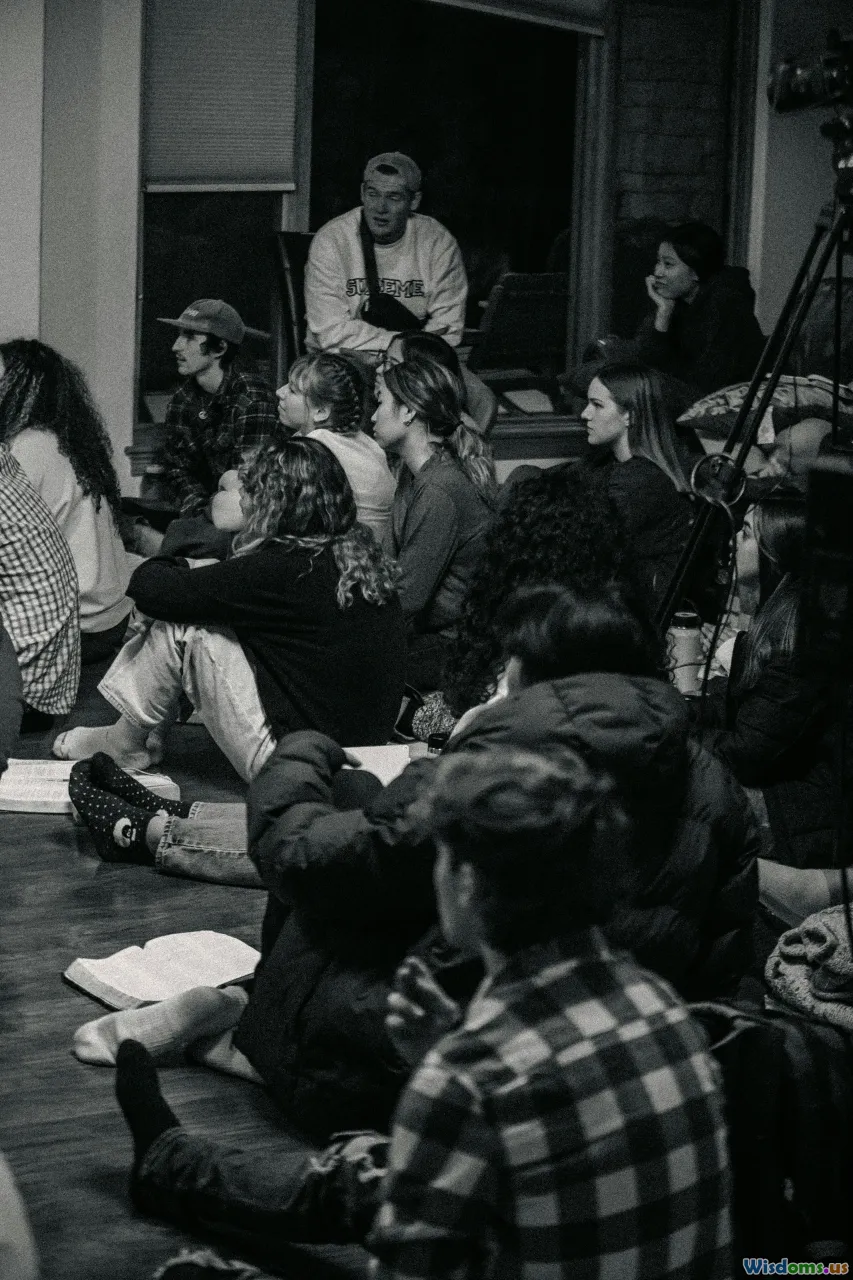
Why Volunteer Training Matters More Than You Think
15 min read Explore the crucial impact of volunteer training on organizational success and volunteer satisfaction. (0 Reviews)
Why Volunteer Training Matters More Than You Think
Picture a crowded community kitchen on a chilly evening—donors busy prepping meals, volunteers wrestling with stacks of canned goods, and a whirlwind of purposeful activity. Now, imagine that none of the volunteers received any training. Suddenly, efficiency slows, mistakes accumulate, and safety risks rise. As vital as it is subtle, effective volunteer training is the backbone of every flourishing nonprofit and community initiative.
Below, we'll explore why investing time and resources into volunteer training pays remarkable dividends—impacting everything from mission fulfillment to volunteer retention. Whether you lead a sprawling nonprofit or coordinate a handful of local helpers, here's an in-depth look at why volunteer training is a game-changer—often in ways that go underestimated.
Building Competence and Confidence

It may seem obvious: well-trained volunteers understand their roles. However, the advantages of meaningful training go well beyond basic competence. Consider literacy tutors at a public library. Initial training covers teaching strategies, cultural sensitivity, and even how to handle sensitive situations confidentially. As a result, these volunteers approach learners with assurance—making both parties more likely to succeed.
Research from the National Council of Nonprofits shows that training arms volunteers with not only technical skills but the confidence to act decisively. Confidence is crucial when assisting disaster victims, supporting vulnerable youth, or responding to urgent calls at animal shelters. Volunteers who feel equipped are more autonomous and motivated, reducing bottlenecks and supervision demands on paid staff.
Key lesson: Confidence is contagious. Well-trained volunteers spread their sense of preparedness throughout their team, elevating the entire operation.
Enhancing Volunteer Retention and Satisfaction

Did you know organizations with thorough orientation and ongoing volunteer training enjoy up to 50% better retention rates than those with ad-hoc instruction? This correlation, found in studies by Volunteer Canada, revolves around a sense of investment. Training tells volunteers: you matter, your skillset matters, and your growth matters.
For example, Habitat for Humanity branches often extend sessions in specific trades (basic construction, safety, or first aid). Volunteers appreciate learning new competencies, which sometimes translate into employment opportunities or career pivots. When people sense they're growing personally, not just giving, they feel satisfaction beyond altruism.
Moreover, the camaraderie built through group learning binds volunteers closer. Sharing knowledge, troubleshooting together, and celebrating the accomplishment of mastering new skills strengthens team cohesion—making each return visit more rewarding.
Minimizing Risk and Liability

Few nonprofit leaders relish paperwork, but risk management is a serious concern. Volunteer mishaps can expose organizations to reputational damage, legal action, or worse. That's why robust volunteer training includes:
- Health and safety practices: Explaining hazard protocols reduces injury rates and demonstrates compliance with workplace regulations.
- Confidentiality and consent: Especially vital for mental health, youth, or legal aid projects.
- Ethical dilemmas: Volunteers often work at the heart of tense, ethically grey interactions. Case studies and role-play scenarios sharpen ethical judgment while reducing costly errors.
Consider Meals on Wheels, where volunteers deliver food to homebound adults, often encountering precarious housing or medical emergencies. Targeted online video modules—which are completed before volunteers ever make a delivery—enable quick, safe, and compassionate action if challenges arise. This foresight has measurably reduced accidents and elevated trust from clients and the wider community.
Boosting Organizational Capacity

Effective volunteer training scales up what your organization can achieve. Instead of relying solely on experienced staff for key tasks, you can confidently delegate complex projects to trained volunteers. Take disaster recovery networks that mobilize thousands after wildfires or hurricanes; with prior training, volunteers can lead on logistics, distribute supplies, and coordinate communications.
A well-trained volunteer team becomes a reliable extension of staff. During COVID-19, food banks faced unprecedented demands. Bank of America's Charitable Foundation noted in 2022 that food charities with comprehensive remote training ramped up volunteer-powered logistics 30% faster than counterparts with less structure. That speed translated into more families supported when timing was crucial.
Actionable tip: Develop a "train-the-trainer" model. Seasoned volunteers with teaching acumen can multiply your capacity by onboarding and mentoring fresh recruits—building organizational resilience over time.
Improving Service Delivery Quality

Every touchpoint between a volunteer and service user is a chance to deliver on your group's mission. Without training, volunteers might struggle with sensitive conversations, cultural sensitivity, or the nuances of active listening. With even brief, focused guidance, they become ambassadors who make every recipient feel seen and valued.
For instance, crisis helplines typically require trainees to complete 20-40 hours of onboarding that covers de-escalation strategies, resource referral, and compassion fatigue prevention. The impact? Callers consistently rate their support at crisis lines with robust trainings as more empathetic and effective.
Small organizations can follow suit with micro-trainings or tip sheets tailored to their context: How do you greet first-time visitors at a soup kitchen? What's the best way to calm a frightened animal at a rescue shelter? Even short, practical tips create more consistent, higher-quality service experiences.
Fostering Diversity, Equity, and Inclusion

Modern volunteer bases are more diverse than ever—encompassing all ages, backgrounds, and life experiences. Volunteer training is a linchpin for advancing inclusion, whether that means understanding pronoun use, challenging unconscious bias, or adapting meeting routines for neurodiverse participants.
Consider Special Olympics, whose volunteer trainers devote significant attention to disability etiquette and inclusion best practices. Volunteers learn how small adjustments can dismantle invisible barriers—like sensory accommodations at events or using plain language instructions. These measures not only ensure that all beneficiaries feel welcomed, but also that volunteers themselves are a representative mosaic of the broader community.
Wisely crafted training, informed by community feedback and participant voices, helps organizations take action beyond slogans—creating spaces where everyone’s contributions are valued.
Simplifying Onboarding and Volunteer Management

A common frustration among first-time volunteers is uncertainty: Where do I go? Who should I report to? What do I do if...?
Structured orientation and training programs, including digital handbooks and onboarding checklists, reduce uncertainty to almost zero. Imagine Girl Scouts, who use modular e-learning for troop leaders and parent volunteers. Each new member receives streamlined materials covering schedules, safety, and resources—all easily updated as standards evolve.
The pay-off is twofold:
- Smooth transitions: Coordinators spend less time answering repeat questions and more time on strategic mission work.
- Empowered autonomy: Volunteers who know the ropes are likelier to drive their own engagement—pitching in where needed without hand-holding.
Organizations that offer accessible training platforms—think Zoom workshops or bite-sized YouTube explainers—are especially adept at onboarding students, retirees, and remote volunteers who crave structure and clarity.
Adapting to New Technologies and Trends

Nonprofits, like businesses, must keep pace with digital innovation. From basic database management to social media advocacy, volunteers are expected to navigate modern tools that simply didn’t exist a decade ago.
Take American Red Cross and its virtual disaster assistance teams: Volunteers must learn digital mapping, cloud-based coordination, and real-time communications technology. Training ensures rollouts are seamless—not disruptive.
Even for small nonprofits, embracing technology-oriented volunteer training opens new doors:
- Automating administrative tasks (volunteer hour tracking, scheduling)
- Broadening fundraising reach through online campaigns
- Offering crisis response via text lines or video calls
Crucially, ongoing tech training creates a culture of continuous improvement. Volunteers aren’t left adrift as platforms update or systems change—they learn to adapt alongside the organization, supporting sustainability for the long haul.
Case Study: Turning Challenges Into Growth Opportunities

Let’s zoom in on a real-world turnaround. An environmental nonprofit in Oregon struggled to retain volunteers for its river cleanup events. High attrition traced back to lack of clarity—newcomers didn’t know how to sort or recycle debris, and many felt out of place amid jargon and tight-knit regulars.
After community feedback, the group revised its onboarding: All first-time volunteers now attend a 30-minute orientation, including hands-on demos, a Q&A, and a welcome circle. The outcome? Within two seasons, volunteer numbers doubled, re-engagement soared, and team leaders noticed a 60% drop in safety incidents. Their story is a vivid reminder: intentional training transforms pain points into platforms for progress.
Tips to Level Up Your Volunteer Training Today

Ready to redesign your volunteer training program? Here’s a targeted toolkit:
- Prioritize the basics. Always cover safety, role expectations, and communication channels.
- Offer multiple formats. Blend in-person sessions with accessible digital content to suit all learning styles and schedules.
- Involve experienced volunteers. Peer-to-peer teaching builds trust and sustainability.
- Solicit frequent feedback. Continuous improvement depends on understanding real volunteer experiences.
- Recognize progress. A simple acknowledgment goes a long way; celebrate training completions as important milestones.
- Connect training to wider impact. Show volunteers how mastering skills—however small—contributes directly to big-picture change.
Each step you take creates a ripple: More motivated volunteers empower more robust outcomes for your mission.
Today’s nonprofits and grassroots organizations face complex challenges that defy easy solutions. The secret weapon? Volunteers who are sharp, confident, empathetic, and fully prepared for what lies ahead. Ultimately, volunteer training isn’t just a box to check—it’s where vital change begins. By making it a focal point, you create fertile ground for lasting impact and a new generation of engaged, effective community champions.
Rate the Post
User Reviews
Popular Posts



















